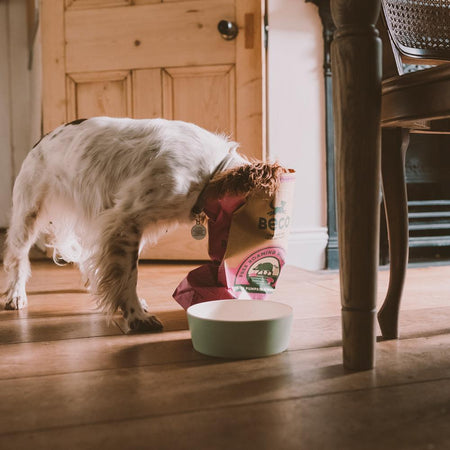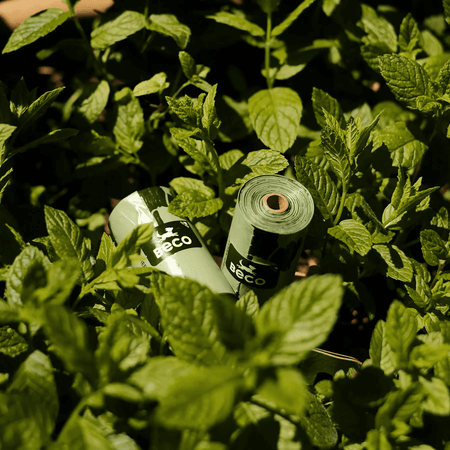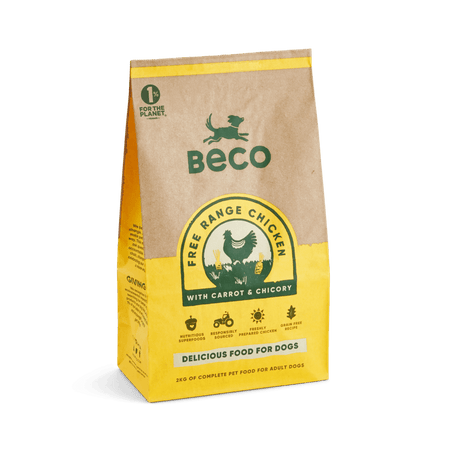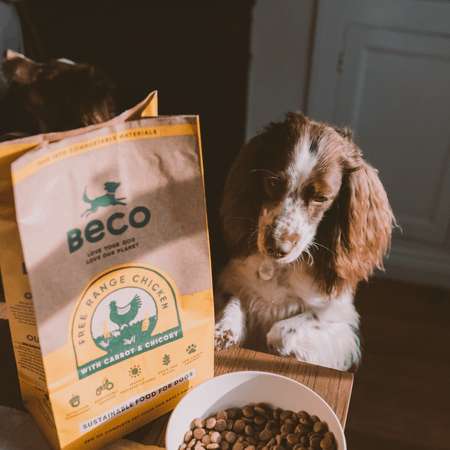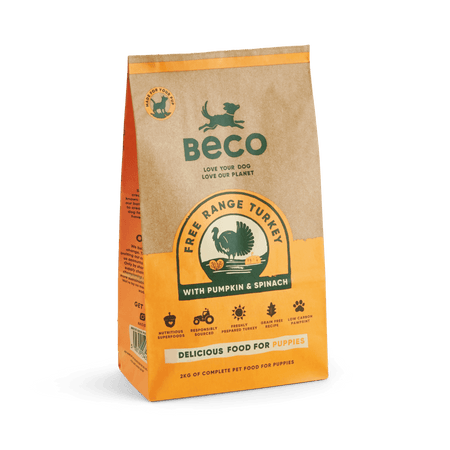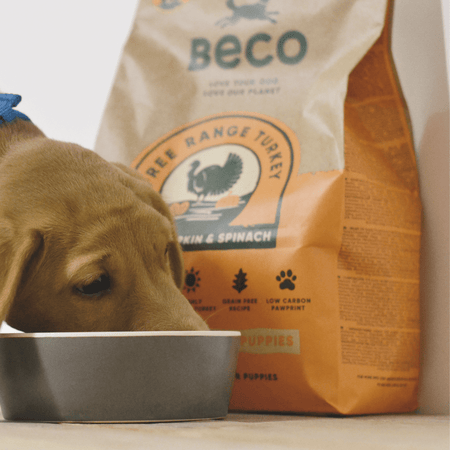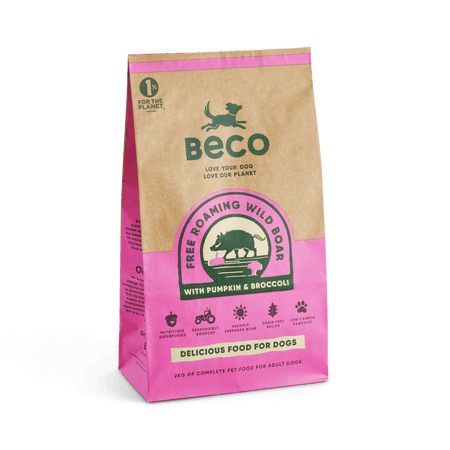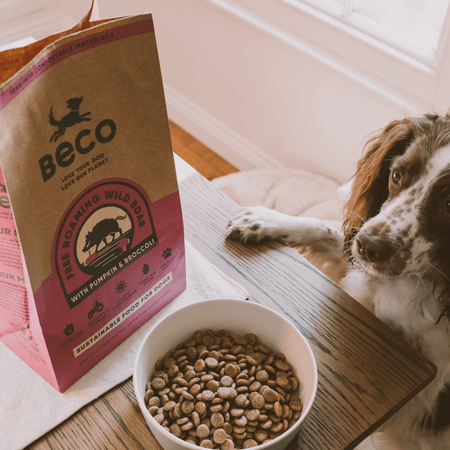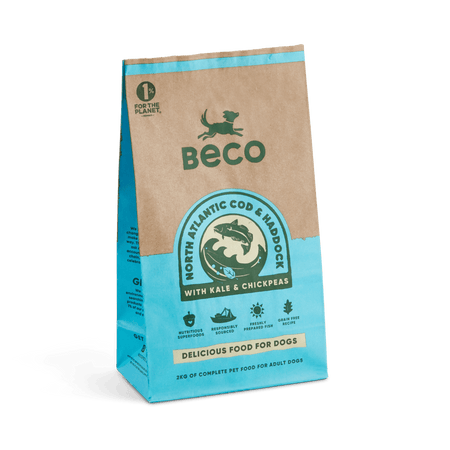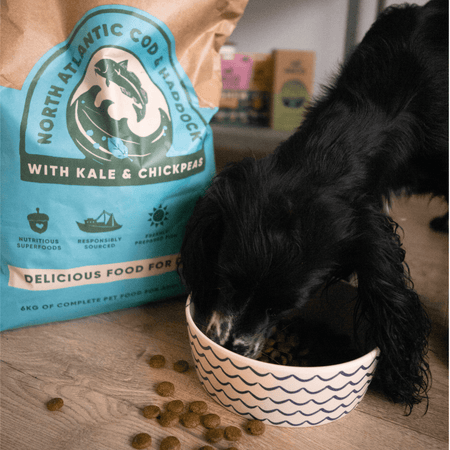Let’s just say, dogs aren’t the pickiest bunch. They have an overriding tendency to think with their stomach. They’re curious and quite happy to guzzle anything up, without considering the consequences. If it’s not necessarily healthy food for dogs, they’re not fussed.
That’s why it’s so important as owners we put the right stuff in front of them. A dog’s diet needs to be well balanced. They need protein, vitamins, carbohydrates and essential minerals to help keep their bones strong and their bellies full.
Last year, 76% of cat/dog food buyers said that actively looking after pets' digestive health is essential for their overall health - it’s great to see that most owners are on the same page. Bowls should be full of nutritious value, but knowing what to put in them can be hard to get your head around.
But what about meat meal? This fine, dry, brown powder has, for many years, been a central component of dry dog food. But is meat meal like chicken meal actually good for our dogs? Or should we be feeding dogs grain free dog food? Wet or dry? Cooked or raw?
We’re talking all about meat meal in this post. So, if you are stuck on the fence and unsure whether you should be feeding your pup this common type of dog food, read on.
What is meat meal in dog food?
Meat meal is an ingredient added to a large proportion of commercial dog food brands. It’s been a popular choice for many years - a relatively cheap alternative for dog owners. The most common types of meat meal are chicken meal, beef meal and lamb meal.
But, there’s a reason why it comes at a cut price.
Unlike fresh alternatives, meat meal is made from parts of animals that aren’t allowed to be sold for human consumption; things like residual meat, offal, connective tissues and, in some cases, bones. These ingredients are cooked at extremely high temperatures and essentially dehydrated down to a dry, brown powder.
According to UK Feeds Stuff Regulations, meat meal should be “free of hair, bristle, feathers, horn, hoof and skin and of the contents of the stomach and viscera". There have been cases, however, where certain brands have been exposed for including some of these in their products.
What is the process?
Meat meal is made through a process known as rendering. This involves the raw materials being cooked at high temperatures between 115ºC to 145ºC. It’s a bit like a big stew. A large amount of the moisture is removed and pressure is applied to separate the melted fats from the protein and bone solids.
At this point the produce is already dehydrated, but after cooking stops it’s processed again and even more moisture is removed. It’s then ground to form a dry and fine powder which is mixed with dog, and cat food. Meat meal is generally perceived to be a lot less nutritious than fresh dog food, but it’s important to remember that every dog requires a different kind of diet.
How can you tell if it's meat meal?
Dog food brands that use meat meal are now aware of the unwanted reputation it’s established. To counter this, they’re carefully modifying packaging and labelling. On the high street shelves, or online, you may come across a number of products that refer to their food as ‘Beef Meal’ or ‘Chicken Meal’ - a simple reshuffle to obscure what’s really inside.
This is also the case when dog food is marketed as ‘dried chicken’ or ‘dried meat’. If you see this, it’s likely to be meat meal. If you’re against the thought of meat meal, it’s always a good idea to scan these products when you come across them.
Why meat meal?
Meat meal is the cheap option when it comes to dog food - that’s what makes it so popular. The ingredients used are low quality compared to fresh and nutritious dog foods, which of course cuts back on cost. There’s also a huge cost saving on transportation and storage.
Because of its dry powder form it’s much easier to get it from the manufacturing location to stores. Dehydrated powder requires no refrigeration or regulated conditions. Instead, meat meal can be transported in bulk - and on a budget.
Is meat meal as bad as it sounds?
While dehydrated, powdered meat doesn’t sound particularly pleasing, meat meal does have some benefits. As mentioned, it’s a cheap alternative. It’s also used by some brands as a way to boost levels of protein within the food. And, it’s worth mentioning that some types of meat meal are much more digestible than others.
There’s also a case to be made for meat meal in terms of its waste efficiency. The ingredients used are all produced from things us humans can’t, or don’t like to eat. Of course, offal is a particular taste, but it is okay for humans to eat. At the moment, it’s out of fashion which means when food is produced, tonnes of offal and other parts go to waste.
Meat meal makes the most of this wastefulness, so in this instance, meat meal ticks a lot of boxes. But, there are two sides to the coin. The issue with meat meal’s use of waste is that a lot of it comes from different places.
Because offcuts and unwanted parts arrive from a host of slaughterhouses, it’s incredibly difficult to regulate and assess the conditions that the animals used in meat meal were farmed in. From an animal welfare standpoint, things get tricky.

Of course, it’s up to dog owners to feed theirs what they wish, and remember: different dogs need different types of food. In our eyes, however, our friends need healthy dog food. As with what we eat, the healthiest food is more often than not the one with the highest quality ingredients, fresh and full of nutritious value. Quality always costs a little bit more, but we think it’s worth it.
Explore some of the best dry dog food available here. From free range chicken to wild boar and sustainably sourced cod and haddock, we’re big on tasty flavour and delicately balanced diets. We also have some delicious healthy puppy food, perfect for the early stages of development.


